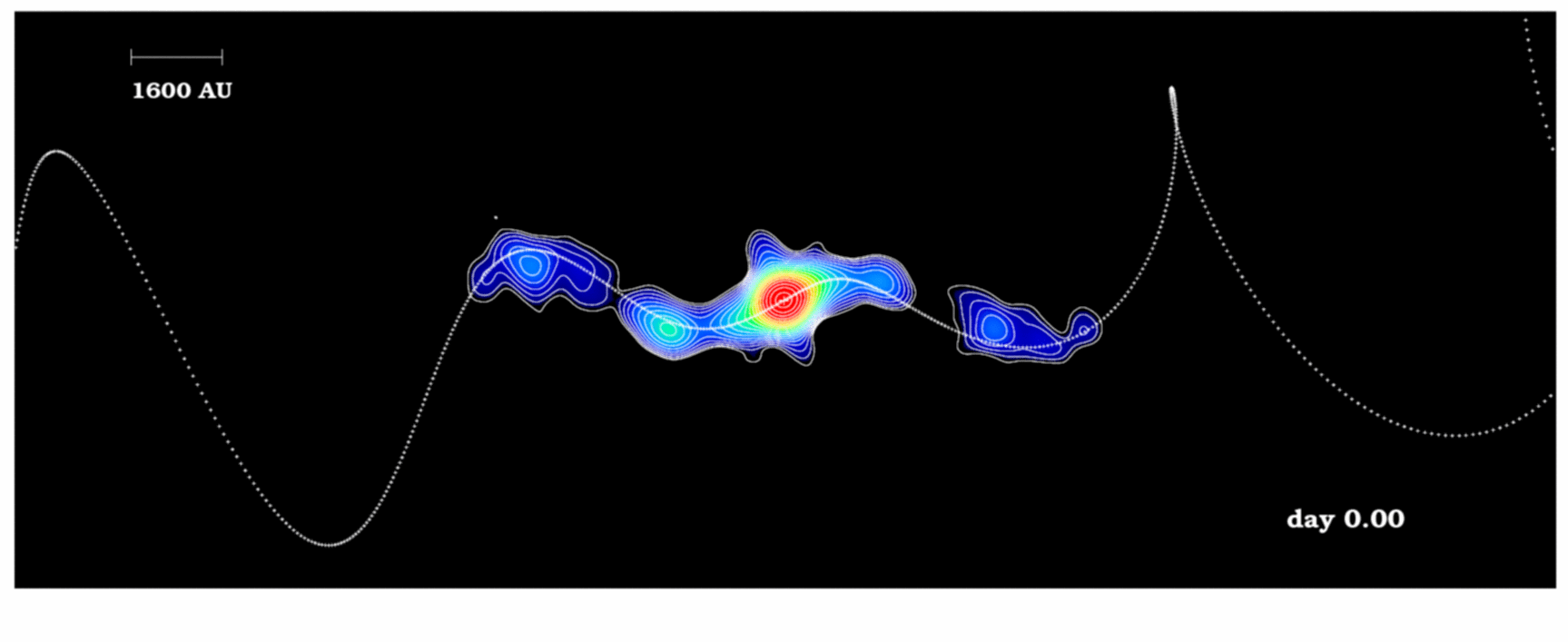Post
Mini Me
11 June 2013
 A. Mioduszewski et al., NRAO/AUI/NSF
A. Mioduszewski et al., NRAO/AUI/NSFQuasars are among the most energetic things in the universe, and are intense sources of radio waves and visible light. They typically have large redshifts, and are therefore very far away. Although they can be thousands of times brighter than the entire Milky Way galaxy, the source of their energy is relatively small, a fraction of our galaxy’s size, so they look almost point-like in the way stars do. For this reason they were called quasi-stellar radio sources, or quasars for short. For a long time the source of a quasar’s power was a mystery, and models developed to explain them were controversial. We now know that they are driven by black holes in the center of galaxies, and are part of a larger class of objects known as active galactic nuclei, or AGNs. These AGNs are driven by supermassive black holes.
When a supermassive black hole eats nearby gas, dust and stars, it is known as an active galactic nucleus (AGN). These active black holes have superheated material swirling around them in a circular disk, known as an accretion disk. They also have jets of gas and dust shooting out from their polar regions at a large fraction of the speed of light. The jets are formed by a fairly complex process, but basically some of the material from the accretion disk gets so much energy from the heat, magnetic fields, and such that instead of falling into the black hole it shoots away and escapes.
The material in the accretion disk is swirling around the black hole in a tight circle, which means all the charged particles in the disk are being accelerated. When you accelerate charges, they give off radio waves along their direction of motion, known as synchrotron radiation. If you look at an AGN from a bit of an angle, you would see intense visible light from the superheated accretion disk, and depending on your angle you might (or might not) also see intense radio waves, which makes it a quasar.
Because of their distance, quasars can be quite difficult to study. In particular it can be difficult to study the dynamics of these active black holes. This challenge is made worse because of their tremendous size. Since they are millions of solar masses, the features of quasars tend to change very slowly on human scales. The jets of AGNs, for example, evolve over centuries.
Fortunately, quasars have a smaller version, known as microquasars. A microquasar is a stellar-mass black hole or neutron star with a stellar companion. The companion is close enough that some of its outer material is captured by the black hole or neutron star. The captured material forms an accretion disk, just as supermassive black holes due. Because these binary systems give off intense x-rays as well, they are more commonly known as x-ray binaries. When they give off intense radio waves as well, they are known as microquasars.
Because microquasars are physically similar to regular quasars, with a compact massive core, accretion disk and jets, the dynamics of the two are likewise similar. But since the microquasar is stellar mass rather than a million solar masses, the timescale of a microquasar is much smaller. This means we can watch a system change over days rather than centuries.
You can see an example of this in the image above which shows the radio jets of the microquasar SS433 as they change over time. You can see the jets expand in a corkscrew pattern. This is because the accretion disk is precessing over time, and the jets spiral over time.
By observing the dynamics of microquasars we gain a glimpse into the complex dynamics of supermassive black holes and the mysterious quasars they drive.